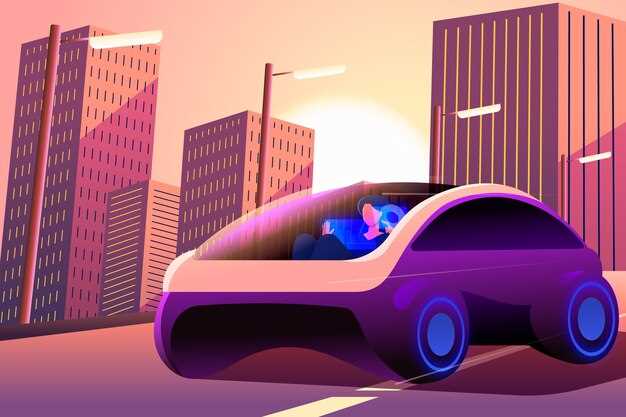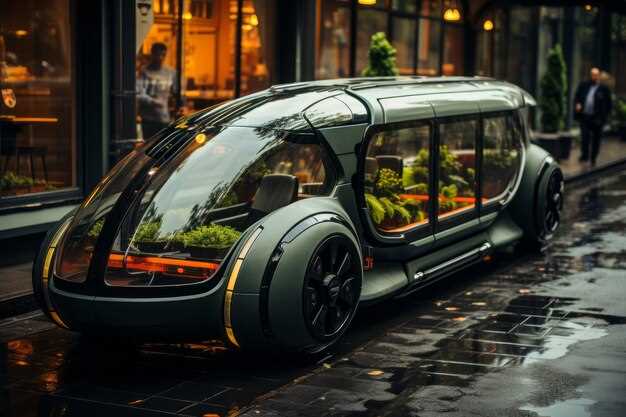Fiat’s Role in the Future of Urban Mobility

The evolution of urban mobility is undergoing a significant transformation, driven by the need for sustainable and efficient transportation options. Among the key players in this movement is Fiat, a brand known not only for its innovative vehicles but also for its commitment to reshaping how we think about car ownership and usage in urban environments.
As cities face growing challenges related to traffic congestion, pollution, and limited parking, Fiat is at the forefront of developing solutions that prioritize accessibility and ease of use. The company is leveraging technology and design to create a new generation of vehicles that integrate seamlessly with emerging urban infrastructures, contributing to smarter and greener transportation systems.
Fiat’s initiatives, such as micro-mobility solutions and electric vehicle offerings, highlight its dedication to reducing the carbon footprint associated with urban travel. By redefining the role of the car in city life, Fiat is not only enhancing personal mobility but also setting a precedent for other automakers to follow. The focus on eco-friendly practices and innovative technology positions Fiat as a catalyst for change in urban transportation, making it a brand to watch in the quest for sustainable urban mobility solutions.
Design Innovations in Fiat City Cars for Urban Mobility
Fiat has long been synonymous with compact vehicles adept at navigating the intricacies of urban environments. Recent design innovations in Fiat city cars emphasize efficiency, sustainability, and intelligent technology, making them ideal for modern urban mobility challenges.
One significant advancement is the integration of electric powertrains in Fiat’s city models. This shift not only reduces carbon emissions but also aligns with the global push for greener transportation solutions. The compact size of these vehicles complements their electric designs, facilitating easier parking and maneuverability in congested city streets.
Additionally, Fiat has prioritized smart technology features that enhance the driving experience. Innovations such as advanced navigation systems, connectivity with mobile devices, and autonomous driving capabilities allow for seamless integration into the urban transport ecosystem. These features improve not only convenience but also safety, crucial for navigating busy city landscapes.
Moreover, the interior design of Fiat city cars focuses on maximizing space while ensuring comfort. Modular seating arrangements and innovative storage solutions reflect the needs of urban dwellers, allowing for greater functionality in daily commutes. The use of sustainable materials in the interiors further exemplifies Fiat’s commitment to environmentally responsible design.
Another noteworthy innovation is the incorporation of shared mobility solutions within Fiat city cars. The concept of car-sharing and ride-hailing is increasingly popular in urban settings, and Fiat has adapted its designs to facilitate these services. Customization options for fleet vehicles enhance the flexibility and user experience for shared mobility operators.
In conclusion, Fiat’s design innovations in city cars are transforming urban mobility, reflecting a holistic approach that encompasses sustainability, technology, and user-centric designs. As cities evolve, Fiat continues to play a pivotal role in shaping the future of transportation within urban landscapes.
Integration of Electric Fiat Vehicles into Smart City Infrastructure

The integration of electric Fiat vehicles into smart city infrastructure marks a significant step towards sustainable urban mobility. These vehicles offer an eco-friendly alternative to traditional cars, contributing to reduced emissions and enhanced air quality in urban areas.
Electric Fiat cars can be seamlessly incorporated into smart city frameworks through advanced technologies such as IoT (Internet of Things) and AI (Artificial Intelligence). These technologies facilitate real-time monitoring and management of vehicle fleets, optimizing routes and reducing congestion. By utilizing data analytics, city planners can assess traffic flow and adjust public transport schedules accordingly, further improving the efficiency of urban mobility.
Charging stations for electric Fiat vehicles can be strategically placed throughout smart cities, ensuring accessibility for residents and encouraging the transition to electric mobility. Integrating these charging points with renewable energy sources, such as solar panels, can enhance sustainability efforts, providing green energy for urban transportation.
Moreover, the concept of shared mobility through electric Fiat vehicles can alleviate parking challenges in densely populated areas. Car-sharing programs allow residents to access vehicles on-demand, reducing the need for private car ownership and promoting a shift towards more sustainable travel habits.
Lastly, the collaboration between Fiat and city governments can pave the way for innovations in transportation policies, fostering an environment conducive to electric mobility. By prioritizing infrastructure that supports electric vehicles, cities can lead the charge towards a cleaner and more efficient urban transportation landscape.
Fiat’s Role in Promoting Sustainable Transportation Practices in Cities

Fiat has been a significant player in transforming urban mobility by introducing innovative solutions aimed at sustainability. The company’s commitment to eco-friendly transportation is evident in its development of electric and hybrid vehicles, designed to reduce emissions and promote responsible car usage. Through these advancements, Fiat demonstrates its understanding of the urgent need for a transition towards greener technologies in urban settings.
The Fiat 500 Electric is a prime example of the brand’s efforts in this area. By offering a compact, fully electric car, Fiat caters to the needs of city dwellers, who require efficient mobility options without compromising on environmental standards. This vehicle not only minimizes carbon footprint but also aligns with urban infrastructure, featuring designs that prioritize maneuverability in crowded spaces.
Furthermore, Fiat collaborates with cities to create integrated mobility solutions that encompass public transportation systems and shared mobility platforms. Initiatives such as car-sharing programs allow residents to utilize Fiat vehicles without the necessity of ownership, reducing the overall number of cars on the road and alleviating traffic congestion. These collaborative efforts foster a more sustainable urban environment by promoting diverse mobility options and decreasing reliance on personal vehicles.
Fiat’s contribution extends beyond just manufacturing cars; the brand actively advocates for infrastructure improvements that support sustainable practices. This includes promoting the installation of charging stations for electric vehicles and encouraging the development of bicycle lanes, all of which enhance the overall urban mobility framework.
By prioritizing sustainability in urban transportation, Fiat is paving the way for future developments. The company’s progressive approach not only sets an industry standard but also inspires other automakers to adopt similar practices. As cities continue to evolve, Fiat’s role in shaping a sustainable transportation landscape is crucial, proving that innovation in mobility can coincide with environmental responsibility.



